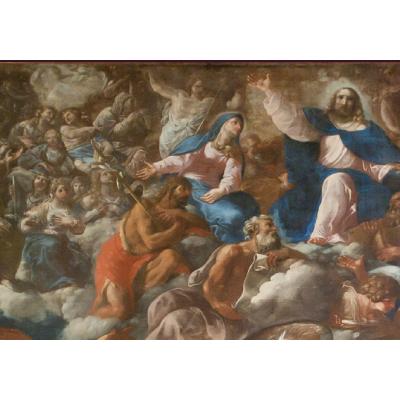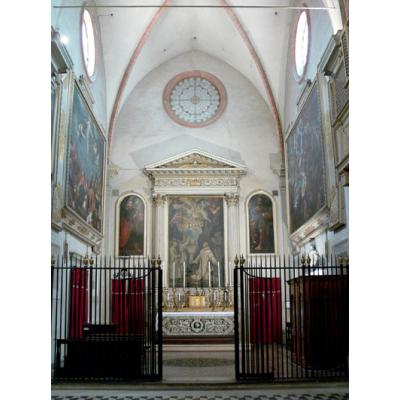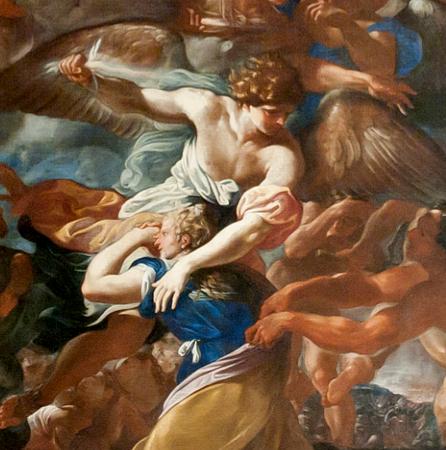Schede
Domenico Maria Canuti (1620 – 1684), Final judgment, 1658. Size 450 x 350 cm ca. Bologna, church of San Girolamo della Certosa, San Bruno Chapel.
A feverish artwork that, within the Christological cycle, voices a different expression with respect to the Classicist language employed by Guido Reni’s pupils. Rather than the Bolognese calmness Canuti adopts the vibrant modes of contemporary Roman painting. This canvas, too, just like the ones by Rossi and by Elisabetta Sirani testifies to the cultural far-sightedness of the Carthusian monks who did not choose to appoint the most fashionable local artists only.
The restoration | Eighteenth-century chronicles report that colors had darkened because of the artist’s careless preparation of the canvas. It therefore comes as no surprise that later in his life he specialized in frescoes. In this specific work, protective paints had greatly tarnished and in some areas the colors showed damp patches. Through the restoration process, carried out by Katia Ronzani, the supporting frame and colors were consolidated, thus allowing a proper reading of the picture in which the use of colors was still reminiscent of the examples set by Ludovico Carracci in his works.
Domenico Maria Canuti (1620 – 1684) | After an early working period in Bertusi’s and Albani’s studios, Canuti was directly trained by Guido Reni. After his Master’s death, he then moved to Giovan Andrea Sirani’s studio but felt that the latter’s style was too close to that of the ‘Divine’ artist and therefore he soon chose to leave. His subsequent transfer to Rome proved to be a fundamental move, and his presence in the city is recorded on documents dated 1651. During his stay Canuti learnt the techniques for large decorative frescoes while developing his own personal painting language. However, the examples set by Roman Baroque expressions never totally overcame the basic teachings he had acquired in Bologna. He thus achieved his own very personal and well-distinguishable style. Afterwards, he was hired in several Italian towns, although Bologna was always his main residential place. He worked in Mantua and Padua and went back to Rome for some important commissions, which allowed him to constantly evolve his painting style. He then settled in his native town where he spent his final years.







